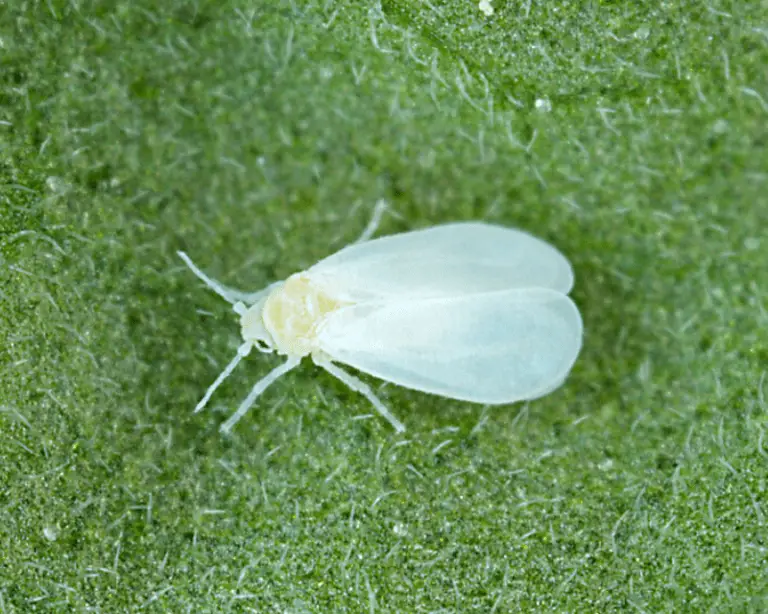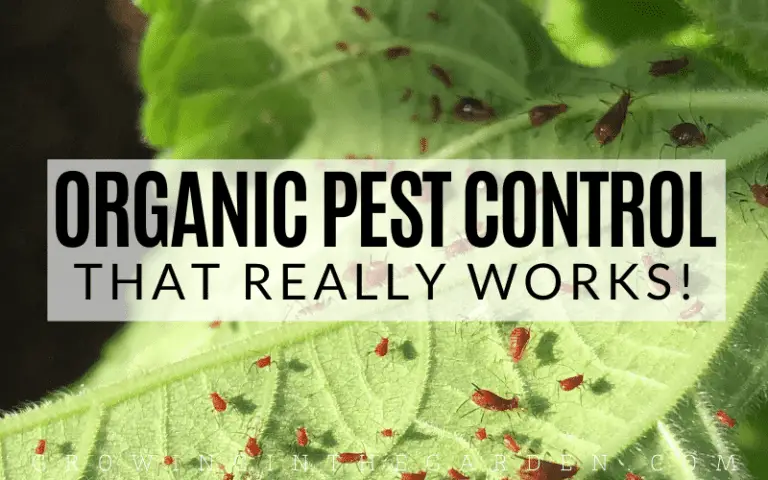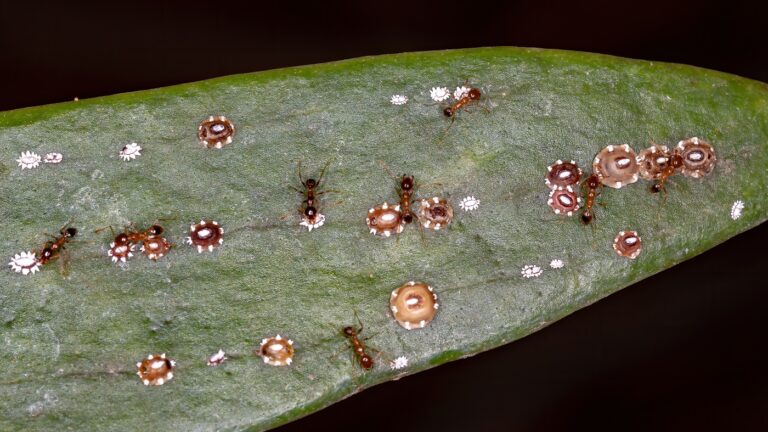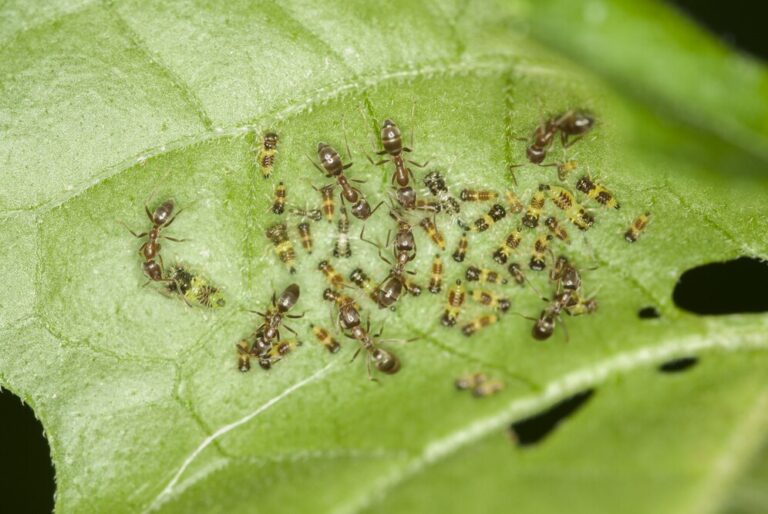How to Repel Flea Beetles: 5 Effective Ways to Manage and Stop These Pests from Your Plants
Table of Contents
Understanding the Threat: Identifying Flea Beetles and Their Impact on Plants
Flea beetles are a common threat to plants, causing significant damage in a short period of time. These small, jumping insects belong to the Chrysomelidae family and are known for their voracious appetites. They feed on the leaves, stems, and even the roots of a wide range of plants, including vegetables, herbs, and ornamentals.
Identifying flea beetles can be tricky, as they are quite small, measuring only about 1/16 to 1/4 inch in length. However, their distinct behavior makes them easy to recognize. When disturbed, they quickly jump and fly away, making a characteristic clicking sound. Their presence is often indicated by small, round holes in the leaves, giving the foliage a shot-holed appearance.
The impact of flea beetles on plants is not limited to cosmetic damage. These pests can weaken the plant’s overall health and vigor, making it more susceptible to diseases and other pests. In severe infestations, the leaves may turn yellow and eventually die off, leading to stunted growth and reduced yields. It is crucial to identify and address flea beetle infestations early on to minimize their impact.

Maintaining Healthy Soil: Enhancing Plant Resistance to Flea Beetles
Maintaining healthy soil is crucial for enhancing plant resistance to flea beetles. These tiny pests, known for their voracious appetites, can quickly decimate a garden if left unchecked. Fortunately, by implementing proper soil management practices, gardeners can create an environment that encourages plant resilience and reduces the likelihood of flea beetle infestations.
One key aspect of maintaining healthy soil is ensuring optimal nutrient levels. Flea beetles are attracted to plants that are weak or stressed, often seeking out those lacking essential nutrients. By regularly testing soil and addressing any deficiencies, gardeners can provide plants with the nutrients they need to thrive. Incorporating organic matter, such as compost or well-rotted manure, can also improve soil fertility and enhance plant resilience.
Additionally, promoting beneficial microbial activity in the soil can help boost plant resistance to flea beetles. Soil microbes play a vital role in nutrient cycling and can contribute to plant health by increasing nutrient availability. Applying microbial inoculants or using cover crops that promote microbial diversity can help create a thriving soil ecosystem, reducing the susceptibility of plants to flea beetle damage.
By prioritizing the maintenance of healthy soil, gardeners can significantly enhance plant resistance to flea beetles. Through proper nutrient management and fostering beneficial microbial activity, plants can develop robust defenses, reducing the attractiveness of their leaves to these opportunistic pests. In the next sections, we will explore additional strategies to further protect your plants from flea beetles and ensure a thriving garden.

Strategic Plant Selection: Choosing Varieties That Are Less Attractive to Flea Beetles
When it comes to protecting your plants from the voracious appetites of flea beetles, strategic plant selection can make a significant difference. By choosing varieties that are less attractive to these pesky insects, you can reduce the risk of infestation and minimize the damage they cause. The key lies in understanding the preferences and behaviors of flea beetles and selecting plant varieties that are less likely to attract them.
One important factor to consider is the overall attractiveness of a particular plant to flea beetles. Certain plants emit volatile compounds that act as attractants for these pests, while others produce chemicals that repel them. By selecting plant varieties that have naturally occurring repellent compounds or lower levels of attractants, you can create an environment that is less appealing to flea beetles. This can significantly reduce the risk of infestation and help maintain the health and vitality of your plants.
Another consideration is the physical characteristics of the plant. Flea beetles tend to prefer plants with larger leaves and softer foliage, which they find easier to feed on. By choosing varieties with smaller, tougher leaves, you can make it more difficult for flea beetles to feed and lay eggs. Additionally, plants with strong, upright stems and a dense canopy can provide some degree of physical protection, making it harder for flea beetles to access the foliage.
Physical Barriers: Using Netting and Row Covers to Protect Your Plants
Physical barriers such as netting and row covers can be an effective method to protect your plants from flea beetles. These barriers create a physical barrier that prevents the beetles from reaching the plants and causing damage. Netting, for example, is a fine mesh material that can be draped over the plants, acting as a shield against flea beetles while still allowing sunlight and air to reach the plants. Row covers, on the other hand, are lightweight fabric covers that can be placed directly over rows of plants, providing a protective barrier. These barriers not only deter flea beetles but also offer additional benefits such as protecting against other pests and creating a favorable microclimate for plant growth.
One advantage of using netting and row covers is their ease of installation. They can be easily draped or secured over the plants, requiring minimal effort. Moreover, these barriers are versatile and can be used in various gardening settings, including raised beds, containers, and even hydroponic systems. Additionally, netting and row covers are a cost-effective solution compared to chemical pesticides, as they can be reused for multiple growing seasons. However, it’s essential to choose the appropriate mesh size for the netting to ensure it effectively keeps out flea beetles while still allowing pollinators to access the plants. By implementing physical barriers like netting and row covers, you can significantly reduce the risk of flea beetle damage and safeguard the health and productivity of your plants.
| Aspect | Netting | Row Covers |
|---|---|---|
| Purpose | Prevents pests and birds from reaching plants | Shields plants from frost and cold weather |
| Material | Typically made of lightweight, durable fabric or plastic | Fabric, often breathable, allowing light and moisture |
| Installation | Can be draped directly over plants or supported by hoops or stakes | Laid directly over plants, supported by hoops or frames |
| Pest Protection | Effective against insects, birds, and small animals | Provides a barrier against insects, birds, and larger pests |
| Climate Protection | Offers minimal protection against frost or extreme temperatures | Provides insulation, protecting plants from cold and frost |
| Light and Airflow | Allows light and air to pass through, minimizing impact on plant growth | Permits light and air circulation while providing some insulation |
| Application | Suitable for gardens, orchards, and individual plants | Commonly used in vegetable gardens, especially for early or late-season crops |
| Maintenance | Easy to install and remove; requires periodic cleaning | Low maintenance; may need adjustment as plants grow |
| Durability | Durable and reusable; withstands various weather conditions | Sturdy, withstands moderate weather, but may need replacement over time |
| Cost | Generally affordable; depends on material and size | Affordable, with costs varying based on size and material |
| Examples | Bird netting, insect netting, deer netting | Frost blankets, floating row covers |
Companion Planting: Harnessing the Power of Natural Repellents
Companion planting is a time-tested technique that harnesses the power of natural repellents to protect your plants from flea beetles. By strategically interplanting certain crops, you can create a garden ecosystem that discourages these pesky insects from wreaking havoc on your precious plants.
One effective companion planting method is to include strong-smelling herbs and flowers alongside vulnerable crops. Flea beetles are repelled by the pungent aromas emitted by plants like garlic, onions, and marigolds. By intermingling these repellent plants with the susceptible crops, you create a barrier that confuses and deters flea beetles, reducing their numbers and limiting the damage they can cause.
In addition to repelling flea beetles, companion planting can offer other benefits as well. Some companion plants attract beneficial insects that prey on flea beetles, such as ladybugs and lacewings. These natural predators can help keep flea beetle populations in check, providing an alternative form of pest control that is both effective and environmentally friendly. Furthermore, certain companion plants can improve soil health and nutrient availability, creating a more resilient growing environment that enhances the overall resistance of your crops. So, if you’re looking for a natural and sustainable way to combat flea beetles, consider harnessing the power of companion planting in your garden.
Implementing Crop Rotation: Disrupting Flea Beetle Life Cycles
Crop rotation is a valuable technique for disrupting the life cycle of flea beetles and minimizing the damage they can cause to your plants. By rotating the types of crops you plant in your garden each season, you can effectively prevent flea beetles from establishing a permanent presence and reduce their population over time.
Flea beetles tend to be highly specific in their plant preferences, with different species targeting different plant families. By rotating your crops, you can ensure that the plants most vulnerable to flea beetle infestations are not grown in the same area year after year. This disrupts the beetles’ ability to find suitable hosts and can significantly decrease their impact on your plants.
In addition to breaking the flea beetle life cycle, crop rotation offers several other benefits. It helps maintain soil health by preventing the buildup of pest populations and diseases associated with specific crops. It also allows for more efficient use of nutrients in the soil, as different crop types have varying nutrient requirements. Overall, implementing crop rotation in your gardening practices can be an effective and sustainable method for managing flea beetles and promoting the long-term health of your plants.
• Crop rotation is a valuable technique for disrupting the life cycle of flea beetles and minimizing damage to plants.
• By rotating crops each season, you can prevent flea beetles from establishing a permanent presence.
• Different species of flea beetles target different plant families, so rotating crops ensures vulnerable plants are not grown in the same area year after year.
• This disrupts the ability of flea beetles to find suitable hosts and reduces their impact on plants.
• In addition to breaking the flea beetle life cycle, crop rotation offers other benefits such as maintaining soil health and preventing pest populations and diseases associated with specific crops.
• It also allows for more efficient use of nutrients in the soil due to varying nutrient requirements of different crop types.
• Implementing crop rotation promotes long-term plant health and is an effective, sustainable method for managing flea beetles.
Introducing Beneficial Insects: Natural Predators to Control Flea Beetle Populations
Introducing beneficial insects into your garden is a natural and effective way to control flea beetle populations. These natural predators can help you maintain a healthy and pest-free environment for your plants. Beneficial insects such as ladybugs, lacewings, and parasitic wasps are known for their voracious appetite for flea beetles and can significantly reduce their numbers in your garden.
Ladybugs, also known as ladybirds or ladybirds, are perhaps the most popular beneficial insects due to their attractive appearance and beneficial role in pest control. These small, colorful beetles consume large quantities of flea beetles, aphids, and other garden pests. Their mere presence in your garden can act as a deterrent to flea beetles, as they will actively seek out and consume these plant-damaging insects.

Similarly, lacewings are valuable allies in the fight against flea beetles. The larvae of lacewings, often referred to as “aphid lions,” are ravenous feeders of various garden pests, including flea beetles. They have a keen appetite for both adult beetles and their larvae, effectively reducing the population of these pests in your garden. Introducing these beneficial insects can provide long-term control of flea beetles while minimizing the need for chemical pesticides, promoting a more sustainable and eco-friendly approach to gardening.
By harnessing the power of natural predators like ladybugs and lacewings, you can establish a balanced ecosystem in your garden that ensures the control of flea beetles and other harmful pests. However, it’s important to note that simply introducing these beneficial insects may not be sufficient to eradicate or completely eliminate flea beetle populations. It’s recommended to combine the use of beneficial insects with other integrated pest management strategies for optimal control.
Organic Pest Control Sprays: Homemade Recipes to Deter Flea Beetles
Organic pest control sprays can be an effective method to deter flea beetles and protect your plants. By using homemade recipes, you have the flexibility to tailor the spray to your specific needs while avoiding the use of potentially harmful chemicals. These DIY solutions are not only efficient in controlling flea beetles but also help maintain a healthy and organic garden.
One popular homemade recipe to control flea beetles is a garlic and soap spray. The strong scent of garlic acts as a natural repellent, while the soap suffocates and kills the insects upon contact. To create this spray, simply mince several cloves of garlic and steep them in water for 24 hours. Strain the mixture and add a few drops of liquid soap. Transfer it to a spray bottle and apply it to your plants, focusing on the areas most susceptible to flea beetle damage. Regularly reapply the spray to ensure continued protection.
Another effective homemade spray is made from neem oil. Derived from the seeds of the neem tree, neem oil has insecticidal properties that disrupt the life cycle of flea beetles. Mix one teaspoon of neem oil with a few drops of liquid soap and dilute it in water. Shake the mixture well and spray it onto your plants, concentrating on the undersides of the leaves where flea beetles are most likely to feed. Neem oil not only repels flea beetles but also has a systemic effect, making the plants themselves less attractive to these pests.
When using organic pest control sprays, it’s essential to remember that they should be applied correctly and in moderation. Overuse or improper application can harm beneficial insects and disrupt the overall balance of your garden ecosystem. Additionally, it’s important to monitor your plants regularly for signs of flea beetle infestation and adjust your spray regimen accordingly. With diligent care and the right recipes, organic pest control sprays can effectively deter flea beetles and help your plants thrive.
Neem Oil: A Natural and Effective Solution for Flea Beetle Management
Neem oil has gained popularity among gardeners as a natural and effective solution for managing flea beetles. Derived from the seeds of the neem tree (Azadirachta indica), neem oil contains compounds that exhibit pesticidal properties. One such compound is azadirachtin, which has been found to disrupt the feeding and reproductive behavior of flea beetles, ultimately leading to their decline.
When applied to plants, neem oil acts as a repellent, deterring flea beetles from feeding on the foliage. Additionally, it has been shown to have insecticidal properties, causing mortality in flea beetles by disrupting their growth and development stages. As a result, neem oil is considered an eco-friendly alternative to synthetic chemical pesticides, minimizing harm to beneficial insects and the environment.
To effectively utilize neem oil for flea beetle management, it is important to follow proper application techniques. Dilute the neem oil according to the manufacturer’s instructions and apply it to the affected plants, ensuring thorough coverage of both upper and lower leaf surfaces. It is crucial to reapply the oil after rainfall or irrigation to maintain its effectiveness. However, it is worth noting that neem oil is most effective as a preventative measure or in the early stages of flea beetle infestation. If the infestation becomes severe, it may be necessary to employ additional control methods for optimum management.
In conclusion, neem oil offers a natural and effective solution for managing flea beetles in gardens and agricultural settings. Its repellent and insecticidal properties make it a go-to choice for those seeking environmentally friendly pest control options. By following proper application techniques and using it in conjunction with other integrated pest management practices, gardeners can effectively protect their plants from flea beetle damage and promote overall plant health.
Diatomaceous Earth: Utilizing a Mechanical Barrier Against Flea Beetles
Diatomaceous earth is a formidable tool in the battle against flea beetles. This powdery substance, derived from the remains of ancient marine organisms known as diatoms, can act as a mechanical barrier to deter these pests from attacking your plants. The sharp microscopic particles found in diatomaceous earth scratch and dehydrate the exoskeletons of flea beetles, causing them to perish.
When applying diatomaceous earth, it is crucial to ensure thorough coverage of your plants, particularly the areas most susceptible to flea beetle activity. By creating a protective layer of diatomaceous earth on the leaves and stems, you create an inhospitable environment for these voracious feeders. It is important to reapply diatomaceous earth after rainfall or heavy watering, as the effectiveness of the barrier diminishes when damp. Additionally, keep in mind that diatomaceous earth can be harmful to beneficial insects, so it is vital to target its application solely to areas affected by flea beetles while sparing beneficial organisms.
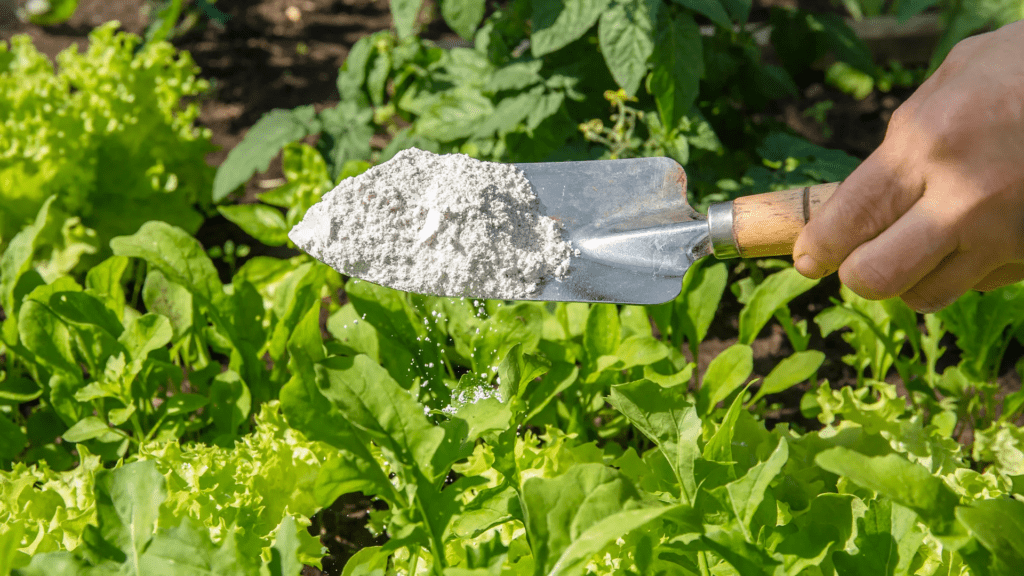
Reflective Mulches: Reducing Flea Beetle Attraction to Your Plants
Reflective mulches can be an effective tool in reducing flea beetle attraction to your plants. These mulches are made from materials that have a high reflectivity, such as aluminum-coated plastic or silver-colored mulch films. The highly reflective surface of the mulch acts as a deterrent to flea beetles, as it confuses and disorients them, ultimately reducing their ability to locate and target your plants.
The reflective mulches work by manipulating the light spectrum and creating a visual barrier for the flea beetles. When exposed to sunlight, the mulch reflects a high percentage of the light, including ultraviolet and polarized light. This altered light spectrum interferes with the insects’ visual perception, making it harder for them to distinguish the plants beneath the mulch. As a result, flea beetles may be less likely to land, feed, or lay eggs on the treated plants.
In addition to reducing flea beetle attraction, reflective mulches offer other benefits to your garden. They can help to maintain soil moisture levels by reducing evaporation, regulate soil temperature by reflecting sunlight, and prevent weed growth by blocking light from reaching the soil surface. By incorporating reflective mulches into your pest management strategies, you can create a healthier and more resilient garden environment.
Proper Garden Maintenance: Removing Weeds and Debris to Discourage Flea Beetles
In order to effectively discourage flea beetles in your garden, proper maintenance is key. One important step is to regularly remove weeds and debris from your planting area. Weeds can not only compete with your plants for nutrients and space, but they can also provide hiding spots and alternative food sources for flea beetles.
When weeds are left unchecked, they can quickly multiply and create a favorable environment for flea beetles to thrive. These tiny pests can hide among the foliage, making it difficult to detect and address their presence. By regularly removing weeds, you not only eliminate their potential hiding spots but also reduce the likelihood of a flea beetle infestation.
In addition to weeds, it’s also important to clear away any debris from your garden. Fallen leaves, dead plants, and decaying organic matter can create a damp and sheltered environment that flea beetles find attractive. By promptly removing this debris, you eliminate potential breeding grounds and discourage flea beetles from taking up residence in your garden.
Maintaining a clean and clutter-free garden not only reduces the attractiveness of your plants to flea beetles but also promotes overall plant health. By eliminating potential hiding spots and breeding grounds, you create an environment that is less favorable for these pests to establish and multiply. So remember, regular maintenance and a tidy garden go a long way in discouraging flea beetles and protecting your plants.
Monitoring and Early Intervention: Detecting and Addressing Flea Beetles before They Cause Significant Damage.
Flea beetles can be a significant threat to your garden, causing significant damage to plants if left unchecked. Monitoring and early intervention are critical in detecting and addressing flea beetles before they have a chance to wreak havoc. By implementing effective strategies, you can minimize the potential damage these pests can cause and ensure the health and vigor of your plants.
Regular monitoring of your garden is key to detecting flea beetles early on. Take the time to inspect your plants for any signs of feeding damage, such as small, shotgun-like holes on the foliage. Additionally, keep an eye out for the presence of adult beetles, which are small, shiny, and capable of jumping when disturbed. By regularly surveying your garden, you can identify the presence of flea beetles early and take prompt action.
Once you have detected flea beetles in your garden, swift intervention is crucial. There are several methods you can employ to address these pests effectively. One of the most immediate steps you can take is removing any heavily infested plants and disposing of them properly, away from your garden.
Furthermore, consider using organic pest control sprays. These homemade recipes offer a natural and effective solution for deterring flea beetles without using harmful chemicals. For instance, a mixture of neem oil, water, and dish soap can be sprayed directly onto the affected plants, creating an unfavorable environment for the beetles.
Implementing row covers and netting can also act as physical barriers, preventing flea beetles from reaching your plants. These protective measures create a barrier that denies the pests access to their desired host plants. When properly installed and maintained, row covers and netting can significantly reduce flea beetle damage.
In conclusion, monitoring and early intervention are vital in detecting and addressing flea beetles before they cause significant damage. Regular inspection of plants and swift action upon detection can help minimize the impact of these pests on your garden. Whether it is removing infested plants or employing organic pest control methods, staying vigilant and proactive in flea beetle management is key to ensuring the health and productivity of your garden.
How can I identify flea beetles on my plants?
Flea beetles are small, shiny beetles that are typically black or metallic in color. They are known for their ability to jump like fleas, hence their name. Look for small round holes in the leaves of your plants, as this is a common sign of flea beetle feeding.
What kind of plants do flea beetles typically target?
Flea beetles are known to target a wide range of plants, including vegetables such as eggplants, tomatoes, cabbage, and radishes. They also feed on various ornamental plants and herbs.
Are there any strategies to make my plants more resistant to flea beetles?
Yes, maintaining healthy soil can enhance plant resistance to flea beetles. By providing plants with proper nutrients and optimal growing conditions, they are more likely to withstand flea beetle feeding and recover from any damage.
How can I protect my plants from flea beetles using physical barriers?
Netting and row covers can be used as physical barriers to protect your plants from flea beetles. These barriers prevent the beetles from reaching the plants and causing damage.
Can companion planting help repel flea beetles?
Yes, companion planting can be an effective way to repel flea beetles naturally. Certain plants, such as marigolds, can deter flea beetles with their strong scent. Planting these companion plants near susceptible plants can help protect them.
What is crop rotation and how can it disrupt flea beetle life cycles?
Crop rotation involves planting different crops in different areas of your garden each year. This can disrupt flea beetle life cycles by preventing them from continuously feeding on the same type of plant. By rotating crops, you make it harder for flea beetles to find suitable hosts.
Are there any natural predators that can control flea beetle populations?
Yes, introducing beneficial insects, such as ladybugs and lacewings, can help control flea beetle populations. These natural predators feed on flea beetles and can help keep their numbers in check.
Can I make my own organic pest control sprays to deter flea beetles?
Yes, there are homemade recipes for organic pest control sprays that can help deter flea beetles. These recipes often include ingredients such as garlic, hot peppers, and dish soap. They can be sprayed directly on plants to repel flea beetles.
How effective is neem oil for managing flea beetles?
Neem oil is a natural and effective solution for flea beetle management. It acts as a repellent and disrupts their feeding behavior. Regular application of neem oil can help deter flea beetles and reduce their damage to plants.
What is diatomaceous earth and how does it work against flea beetles?
Diatomaceous earth is a powdery substance made from fossilized algae. It works as a mechanical barrier against flea beetles by scratching and dehydrating their exoskeletons. Sprinkling diatomaceous earth around your plants can help deter flea beetles.
Can reflective mulches help reduce flea beetle attraction to plants?
Yes, reflective mulches, such as aluminum foil or silver-colored plastic, can help reduce flea beetle attraction to your plants. The reflective surfaces confuse the beetles and make it harder for them to locate the plants.
How important is proper garden maintenance in discouraging flea beetles?
Proper garden maintenance, such as removing weeds and debris, is crucial in discouraging flea beetles. Weeds and debris can attract and provide shelter for flea beetles, so keeping your garden clean can help reduce their populations.
How can I detect and address flea beetles before they cause significant damage?
Monitoring your plants regularly is key to detecting flea beetles early. Inspect your plants for any signs of flea beetle feeding or damage and take prompt action, such as implementing the strategies mentioned in this article, to address the issue before it worsens.

Pallavi Gupta is a burgeoning writer at SouthElMonteHydroponics, blending her passion for data analysis with a keen interest in biotechnology. Currently pursuing a Bachelor’s in Biotechnology at Amity University, Pallavi delves into the intricacies of life sciences while gaining hands-on experience in the exciting world of data analysis. Her unique background provides a fresh perspective on hydroponic farming, as she explores the intersection of biotechnology and sustainable agriculture. Through her writing, Pallavi aims to bridge the gap between data-driven insights and innovative farming practices, inspiring others to harness technology for a greener future.

